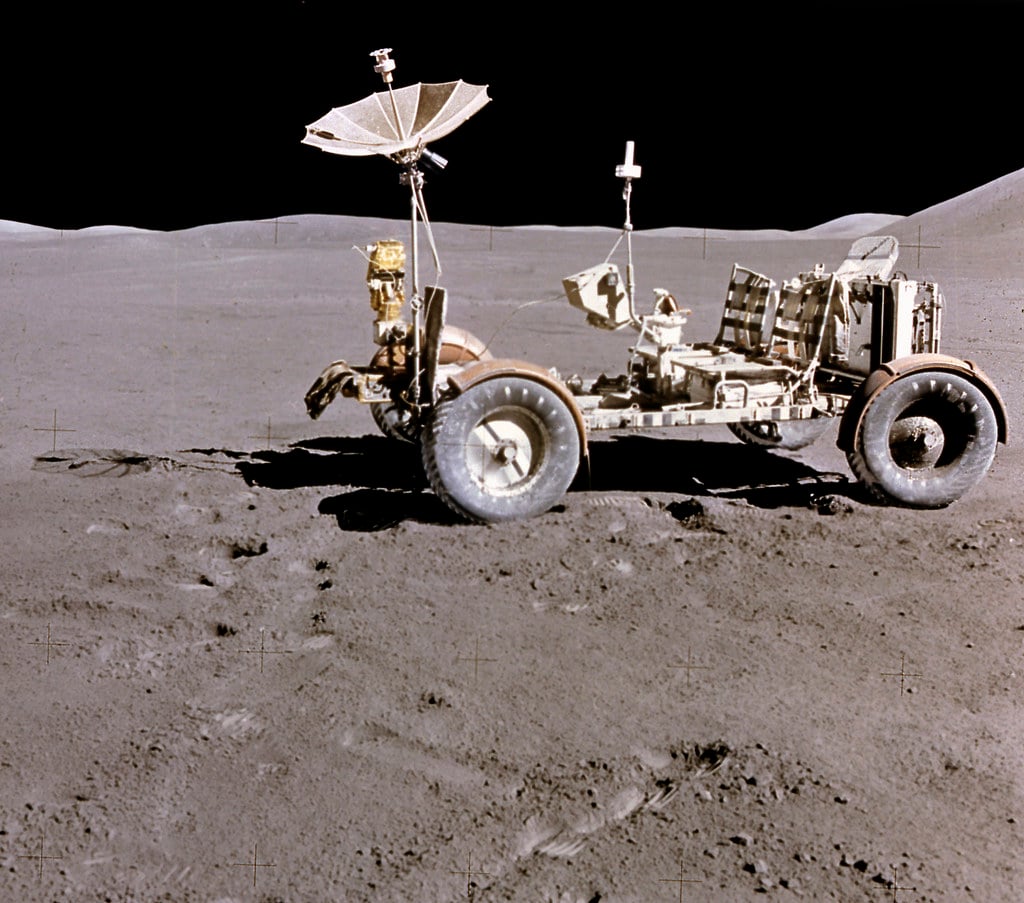
NASA has selected a landing site for its upcoming Moon mission. The space agency will be sending a robotic rover to the polar regions of the Moon to search for ice and water.
NASA’s engineers have been preparing for years for the mission. Scientists have long had their eyes on the water ice that exists on the bottom of the craters on the Moon — identifying it as a potential source of hydration and oxygen for future astronauts, as well as fuel to help send them back to Earth or deeper into the galaxy.
The new rover mission has been dubbed VIPER, an acronym for Volatiles Investigating Polar Exploration Rover, and NASA has now selected the exact crater the vehicle will spend 100 days traversing after it reaches the Moon in 2023.
VIPER Moon rover will traverse crater on Moon’s south pole
VIPER will arrive on the Moon’s south pole and explore the 45-mile-wide Nobile crater there. Nobile was created after an object impacted the surface of the Moon. The crater — which is permanently cloaked in shadow — is one of the single coldest areas in the entirety of our solar system.
“The rover is going to get up close and personal with the lunar soil, even drilling several feet down, which will totally help us redefine what we know about our moon,” Lori Glaze, the director of NASA’s planetary science division, said during a teleconference held on Monday.
NASA selected Nobile after considering “critical parameters, such as Earth visibility — for communications from the moon to Earth — sunlight terrain that’s well suited for the rover to navigate through, and most importantly, of course, the expected presence of ice and other resources,” said Glaze.
She added “while analyzing all these constraints, one study area came out ahead of all the rest — maximizing science return and flexibility to help ensure mission success once Viper is on the moon.”
The agency has dedicated a great deal of energy towards the strategizing and forethought for the selection of this specific lunar crater. And regardless of whether or not they uncover water in Nobile, they will have considered VIPER a success:
“If we find that there’s no water in any place we look, that is a fundamental discovery,” said Anthony Colaprete, VIPER’s Lead Project Scientist, “and we will be scratching our heads and rewriting textbooks again.
“We really don’t know where that water is so we had to find a place where we could cover significant distances — and by significant distances I mean tens of kilometers — going in and out of thermal regimes that included everything from permanently shadowed craters with literally 50 Kelvin temperatures to areas that transitioned to a balmy 110 Kelvin, and then all the way up to 250 Kelvin,” Colaprete elaborated.
NASA had given a contract to Astrobotic Technology Inc. of Pittsburgh to send VIPER to the Moon by the end of 2023. VIPER’s expenses have reached nearly half a billion dollars, and NASA will be compensating Astrobotic with an extra $226 million for getting VIPER to the Moon’s surface.
See all the latest news from Greece and the world at Greekreporter.com. Contact our newsroom to report an update or send your story, photos and videos. Follow GR on Google News and subscribe here to our daily email!



